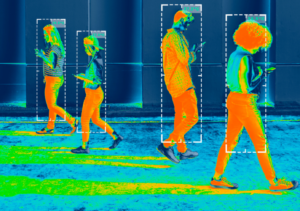Researchers have developed HADAR, a thermal detection and ranging technology that improves traditional machine vision and perception. The patent-pending innovation sees texture and depth and perceives the physical properties of people and the environment.
According to Zubin Jacob, associate professor of electrical and computer engineering at Elmore, by 2030, every tenth vehicle in the world will be capable of autonomous driving, and the number of robots helping people will have grown to 20 million units by that time.
“All of these robots gather information about their surroundings through advanced sensors to make decisions without human intervention,” Jacob said. “However, the simultaneous perception of a scene by many agents is fundamentally prohibited.”
Traditional sensors such as LiDAR, radar, and sonar emit signals and then receive them to gather 3D information about the scene. These methods have drawbacks, including signal interference and risks to human eye safety. In comparison, camcorders that operate in sunlight or other light sources are advantageous, but low-light conditions such as night, fog, or rain are a serious handicap.
Traditional thermal imaging is a completely passive detection method that collects invisible thermal radiation from all objects in the scene. This technology can see through darkness, bad weather and sunlight.
Objects and their environment are constantly emitting and dissipating thermal radiation, resulting in textureless images known as “ghosting”. Thermal images of a human face only show contours and some temperature contrast, but no features, making it look like you’ve seen a ghost. This loss of information, texture, and function is a barrier to machine perception using thermal radiation.
HADAR combines thermal physics, infrared imaging and machine learning to pave the way for fully passive and physics-aware machine perception.
“Our work shows that there is as much information in pitch darkness as in daylight. Evolution has made humans daylight-inclined. Machine perception of the future will overcome this long-standing distinction between night and day,” Jacob said.
Initial applications of the HADAR TeX vision are automated vehicles and robots that interact with humans in complex environments. The technology could be further developed for agricultural, conservation, geoscience, health and wildlife monitoring applications.
Source: Science Daily

